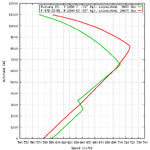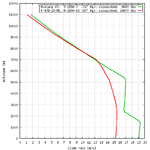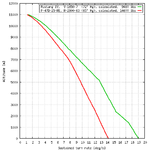drgondog
Major
The flaps worked quite well to increase CLmax (CL= lift coeficient) on the P-51's otherwise low-lift wing.
There was a definite airspeed limitation on deployment of flaps on a 51. The P-38 manuevering flaps on the other hand were designed (for late J and L) for combat speeds.
I don't know where the comes from (probably due to the spifire) but the only thing the eliptical shape does is increase lift to drag ratio, in a full eliptical wing (like the Spit) this also makes for violent stalls, but the straight leading edge of the P-47 mitigates this iirc. (fairly gentle stalls, moreso than the P-51 as well)
The 47 had a gentler stall in a high G turn as it is easy to spin a 51 at stall. Having said that both power on and power off stalls in level flight are very gentle in a 51.
Power doesn't mean much on is own. I's when you put weight into the equation that you can get a comparable figure. Hell the P-38L had over 3500 hp in WEP! Plus the P-47M/N had the R-2800-57C capable of 2,800 hp in WEP up to 32,000 ft. The R-2800-59/63 of the P-47D was cleared for 2,600 hp with 100/150 avgas at 70" HG. (but 70" was only good up to ~23,500 ft) with this a late model P-47D could manage 444 mph at critical altitude. Some may have been tuned up to 2,700+ hp as well.
Drag is an even bigger factor KK. That is why a 51 which didn't have as good a power to weight ratio as a P-38 was nevertheless faster and flew much farther on same fuel load.
But bact to power-loading (weight/power) or (what I prefer) power/weight: the late P-47D weighed 14,600 lbs (clean, full internal fuel), the P-51D in the same configuration was 10,100 lbs. The P-47D had 2,600 hp, the P-51 had ~1,700 hp. So: P-47D: .178 hp/lb P-51D: .168 hp/lb. P-47 is ~6% better. But this is just one simplified comparison.
Back to drag. The 47 compared speed wise above 30,000 feet because the R-2800 blower was more efficient than the Merlin above 25,000 feet (for the -7)



